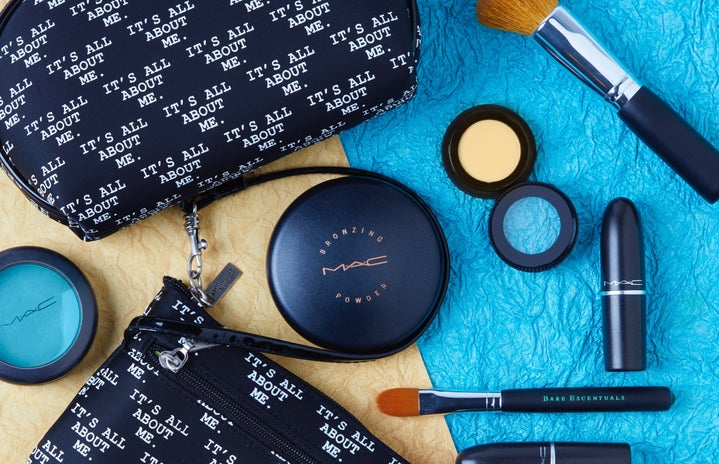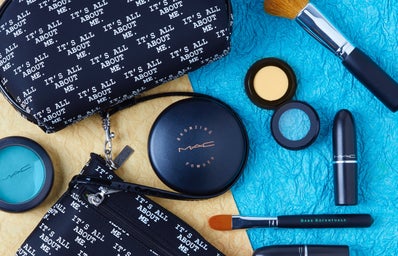The old saying goes “Beauty is in the eye of the beholder,” but we never take it literally of course. Beauty today has become so standardized with the increase of marketing by the fashion and makeup industries. Beauty has become what we think of as models on runways or in spreads of Vogue of skinny women in heels without a flaw (or even pores!). London, Paris, New York, L.A., Milan, Tokyo, and Seoul are spreading their trends to every corner of the world, while the rest gladly absorb and embrace them. However, this movement of standardized beauty across the globe is detrimental to the diversity of the concepts and perceptions of beauty in many cultures. While the rest of the world is busy trading their perceptions for what they deem is better, Mount Holyoke women still maintain and embrace the diverse concepts of beauty in many cultures.
For example, when I was travelling in Burma this past summer, my grandmother scolded me for getting darker in the sun. In the traditional Burmese mentality, light skin is considered to be more beautiful than dark skin. Dark skin for the Burmese symbolizes a day of hard work in the fields, usually doing hard labor while light skin represents a woman who does not have to work and can afford to be indoors most of the day. In addition, a beautiful Burmese woman wears a traditional longyi and yin-bone outfit that consists of a long wrap skirt and a matching fitted three-quarter sleeve top with buttons on the side. Her hair is always wrapped in a beautiful bun and when unraveled, always reaches her lower back. And of course, she always smiles.
[ pagebreak ]
As many south Asian cultures share the common ground of favoring light skin over dark skin, Latin American cultures also have similarities in their views of beauty. MHC Francis Perkins scholar Julia Ortega explains that in her proud Paraguayan culture, a beautiful woman has “dark hair, skin, and eyes” because those characteristics are symbolic of “a mix of indigenous and ‘white blood’ like ‘mestizo,’” meaning mixed heritage or decent. However, Paraguay has also changed its concept of beauty over the years. Today there are even a larger mix of beautiful women that ranges from the traditional “morenas,” meaning brunettes, to blond mixtures of Americans, Brazilians and other Latin American backgrounds.
Pictured: Olypian Athlete from Paraguay, Leryn Franco
While most places in the world are becoming culturally westernized, there are places in the world that truly preserve their culture. Oman, for example, is a small Middle Eastern country where women maintain their heritage through following Islamic law. Most women wear abayas and a hijab or a scarf that covers their whole bodies except for the face and hands. By dressing modestly, they earn respect and have “pride and honor which [also] comes out in the way she walks, talks, and eats,” according to Alefiyah Aziz, Class of 2015, and a proud Omani student. In addition to the fair and soft complexions, they also have “sharp features – eyes and nose” like other women of the Middle East. However, what differs Omani women from other cultures is that she is the “backbone of her family” and she is an “independent woman.” And like many Mount Holyoke women, she is “dignified and classy, does things with style, and has a creative eye.”
[ pagebreak ]
Like Omani culture, inner attitude of a woman is important in Armenian culture, according to Alice Ananian. In Armenian culture, women who are “witty and clever… outspoken, but not cocky” are considered attractive. In terms of her characteristics, the “stereotypical desirable girl has snow white skin,” but there are also many who prefer “mocha girls,” with darker tan shade. She has a fit and healthy body with a nice chest but not too overbearing, a flat stomach, and long legs that is “natural.” Ananian states that Armenian men in particular do not find women who are too “made-up… that a guy is afraid to brush across her cheek because he thinks she might crumble to pieces.”
Pictured: Armenian Olypian Kristine Harutyunyan
In today’s materialistic society, we tend to think of cultural uniqueness as a way of describing physical things, such as clothes, foods, and anything you find in the souvenir shop, but these are objects that can easily be duplicated. You can hold these objects in your hand yet have absolutely no idea the usage or significance behind them. However, the most important part of a culture is the mentality, the behavior, and the attitudes of the people that really cannot be duplicated anywhere. Beauty is a concept that is very similar yet so different in many cultures, especially when viewed in traditional sense.
What does your culture say about the beauty of women? Comment below!

